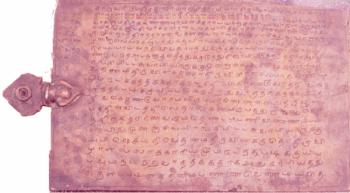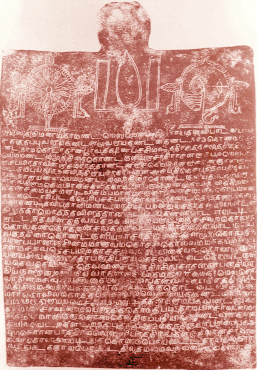Copper Plate Inscriptions
Apart from inscriptions engraved on stones, there are other materials like copper plates, silver plates and golden leaves containing inscriptions. This latter category was the precursor of individual (or movable) copies of documents, which could be brought to the place of verification whenever disputes over possession of property occur. In actual practice, it was customary to record the gift to a temple on stone as well as copper (Cembilum Cilaiyilum Vettik Kolvataka).
Many such records on copper plates were deliberately buried under the earth during troubled times, and, as the custodians had either run away or were dead, this became a thing of the past. Such copper plates accidentally are dug out during ploughing or construction work.One such was the Pallankoyil copper plate inscription, retrieved while clearing a mound, at a place called Pallankoyil in Nagapattinam District.Generally, Pallavas (6 th century CE to 9 th century CE) employed the Tamil script for engraving the Tamil portion of the inscriptions and the Grantha script for engraving the Sanskrit portion.The Pandyas (7 th century CE to 10 thcentury CE), the contemporaneous rulers of the south, employed the cursive script (Vattezuthu) and the grantha script. As an exception, the Ay king Varagunan (9 th century CE) used the Nagari script for writing the Sanskrit portion of the Paliyam grants. Nandhi Nagari was used in Vijayanagar copper plates.



